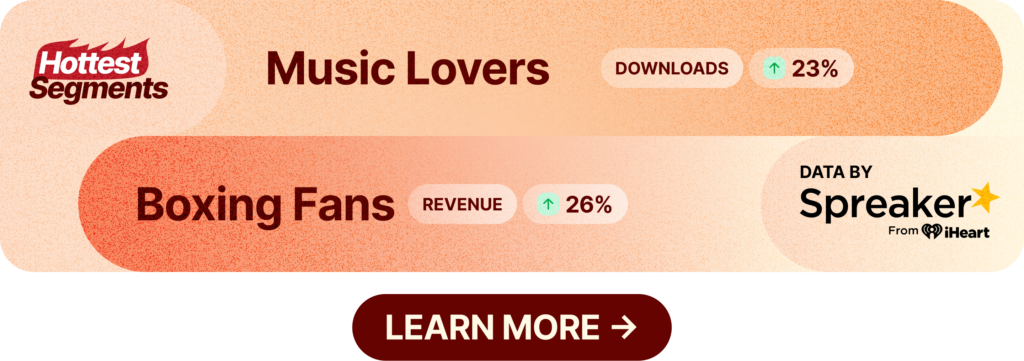Today in the Business of Podcasting
What Are the Fastest-Growing Podcast Languages? by Becca Butcher
While English-language podcasts have made up the bulk of shows, podcasting’s global rise has caused a steady increase of shows produced in other languages. Using end-of-year data from their podcast database, Rephonic has calculated the growth of various languages in podcasting since 2019. Indonesian has been the fastest-growing podcast language over the past five years, theorized to be motivated by widespread smartphone adoptions and a boom in startups. Vietnamese-language podcasts continue to be on track for sustained and rapid growth, as the local podcast population has increased from a few hundred to over 6,000 in four years. Ukrainian is the fastest-growing podcast language in 2023. Rephonic speculates this might be motivated by the Russian invasion causing a cultural shift away from speaking Russian, causing more regular adoption and usage of Ukrainian. [Source]
‘We have to test or you’re dead next year’: Overheard at the Digiday Programmatic Marketing Summit by Kayleigh Barber
This week the Digiday Programmatic Marketing Summit took place in New Orleans. A recurring topic throughout the event was that of what to do with an impending deadline: Google’s removal of third-party cookies by the end of 2024. Among other concerns, anonymous attendees told Digiday they’re finding client hesitancy for new formats to be an issue. Some bump into the issue of a previous agency having tried a new format, but they botched the experiment and the client has no further interest. Some say the biggest challenge is the creative costs involved. Costs that can easily be kept in check when experimenting with podcasting. Hint hint. [Source]
Podcasts aren’t as doomed as they look. But some of the best ones are by Scott Nover
In light of the latest rightsizing at Spotify, Slate gives a bird’s-eye view of the company’s podcast acquisition strategy over the past year, as well as contextualizing headlines throughout the year discussing the “podcast bubble” and the end of “dumb money” in podcasting. Podcasting as a medium is growing, with listenership and ad revenue continuing to climb. What seems to be happening, though, is a potential over-reliance on flagship prestige podcasts and unrealistic expectations for said prestige/exclusive shows to produce revenue. The downside to all of this is the decline of expensive-to-produce podcasts that need the finances of big-name companies. Even people with household names like Reply All’s Alex Goldman report they’re having trouble finding funding for new-new podcast projects. [Source]
Only around a third of ad dollars reach ‘intended audiences,’ ANA finds by Ryan Barwick
The Association of National Advertisers has released the second part of their programmatic supply chain transparency report, and as the article headline says: it’s found some discrepancies. According to their audit of an estimated $88 billion in open web programmatic advertising spend, the ANA found only 36% of ad spend on demand-side platforms actually reached the intended audiences set by the advertiser. 35% of every dollar spent went to nonviewable, non-measurable, made-for-advertising inventory, or bot traffic. The report suggests media buyers prioritize inclusion lists over exclusion lists, and have direct contacts along every step of their adtech supply chain. [Source]
…as for the rest of the news: Tidal announces a layoff of 10% of its staff, and more Digiday coverage of the Programmatic Marketing Summit in which a panelist breaks down integrating programmatic tracking into the creator economy.







































































































































































































